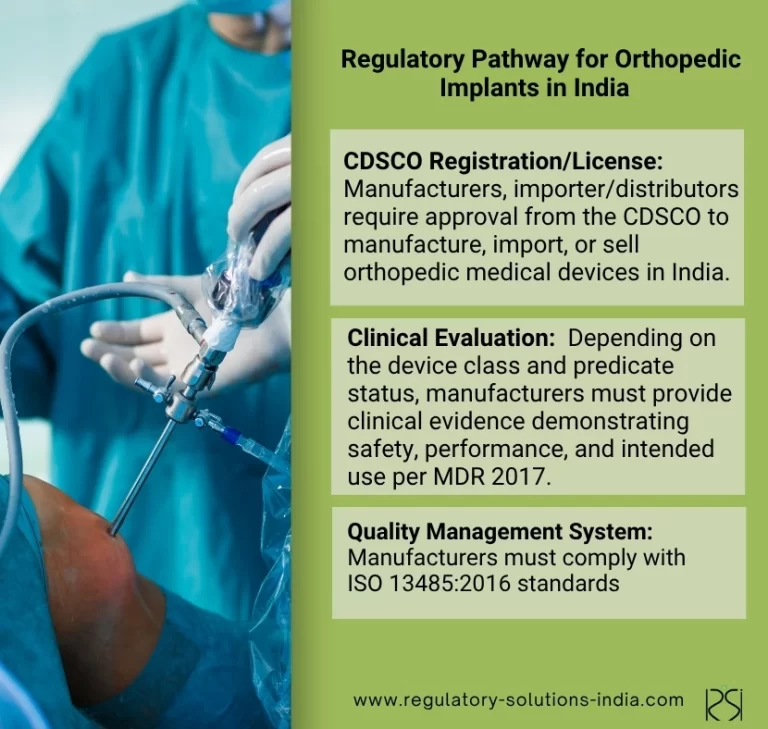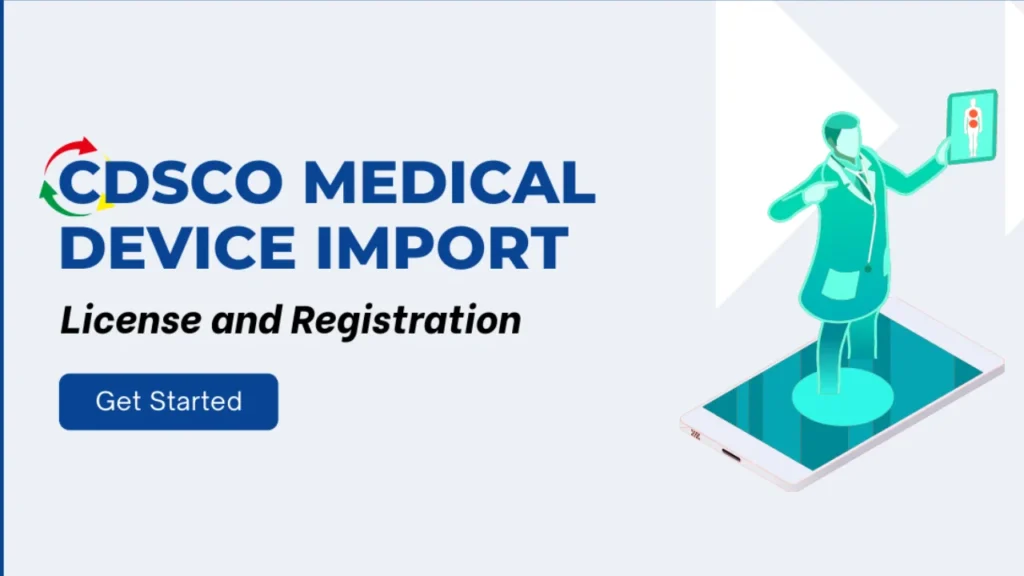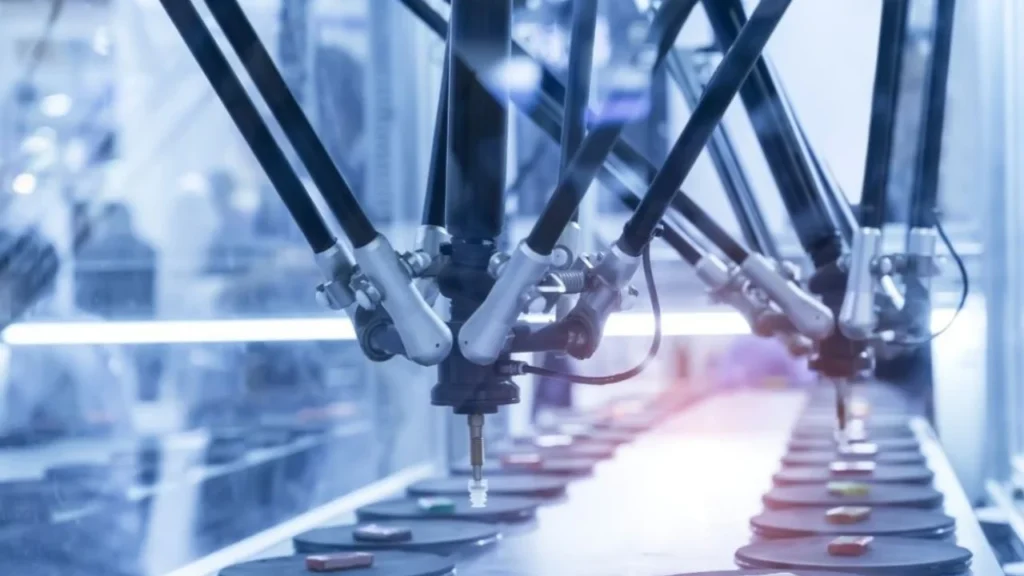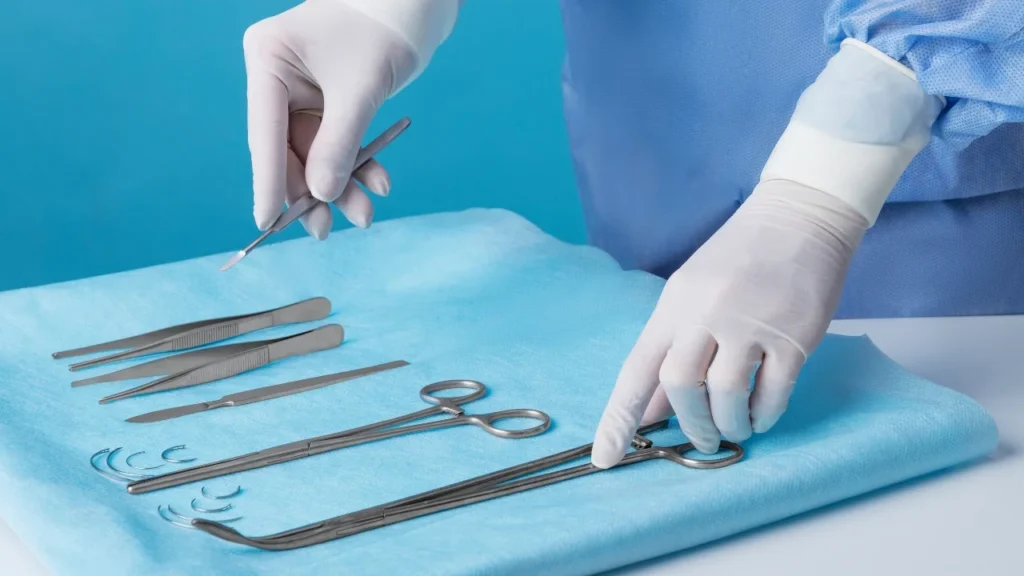As India strengthens its position in the global medical device market, regulatory compliance has become critical for maintaining product quality and patient safety. Among various medical devices, orthopedic implants, classified as high-risk and life-supporting, undergo a rigorous approval process before reaching patients.
If you are an orthopedic medical device manufacturer or planning to become one, this blog will help you understand how India’s regulatory system governs the approval process for such implants under the Medical Device Rules (MDR), 2017.
What are Orthopedic Implants?
Orthopedic implants are specialized medical devices designed to replace or support damaged bones and joints. When body parts such as the hip, knee, or shoulder are affected by injuries, fractures, or conditions like arthritis, these implants help restore mobility and relieve pain. Orthopedic implants are made from strong, biocompatible materials such as metal or medical-grade plastic, that are engineered to function safely within the body. By using orthopedic implants, surgeons enable patients to regain movement, reduce discomfort, and enhance their overall quality of life.
Types of Orthopedic Implants?
Orthopedic implants are available in several types, each specifically designed to address different bone and joint conditions. Here’s an overview of the major categories:
- Joint Replacement Implants: These are used to replace damaged or worn-out joints, helping restore mobility and relieve pain. They are commonly used in conditions like arthritis or severe joint injuries. Examples: Hip implants, knee implants, shoulder implants, elbow implants, and ankle implants.
- Internal Fixation Devices: These are used to stabilize and hold broken bones in the correct position during healing. They are placed inside the body, directly on or within the bone, to ensure proper alignment and faster recovery. Examples: Plates and screws, intramedullary nails or rods, wires and pins, bone screws, cables and cerclage wires.
- Spinal Implants: These are used to support, or correct deformities in the spine. They help treat conditions such as spinal fractures, degenerative disc disease, scoliosis, or spinal instability, providing structural support and aiding in proper alignment during healing or fusion. Examples: rods, screws, plates, cages, hooks, and wires.
- Bone grafts and substitutes: These are used to replace, repair, or stimulate the growth of bone tissue. They help fill bone defects, promote healing after fractures, and support bone fusion in surgeries such as spinal or joint reconstruction. Examples: Autografts, allografts, synthetic bone substitutes, and composite grafts.
How Orthopedic Implants are Regulated in India
In India, orthopedic implants are regulated by the Central Drugs Standard Control Organization (CDSCO).
Regulatory Pathway for Orthopedic Implants in India
- CDSCO Registration/License: Manufacturers, importer or distributors require approval from the CDSCO to manufacture, import, or sell orthopedic medical devices in India. The process ensures that the implants meet safety, quality, and performance standards under the Medical Device Rules (MDR), 2017 before they are marketed.
- Clinical Evaluation: Depending on the device risk class and predicates status, the manufacturers may need to provide clinical evidence demonstrating the implant’s safety, performance, and intended use. This could include clinical investigation data, literature review, or post-market clinical experience in accordance with MDR, 2017.
- Quality Management System: Manufacturers must comply with ISO 13485:2016 standards, ensuring consistent product quality, safety, and regulatory compliance.
How RSI Supports the Regulatory Process?
Regulatory Solutions India (RSI) is a leading medical device, IVDs, and cosmetics regulatory consultancy based in India, which has successfully registered over 400 products across 25+ categories. With their expertise and years of experience they can help you in:
- Compilation and submission of regulatory documentation
- CDSCO approval and licensing
- Submission of IL renewal/retention applications
- Post-market surveillance and compliance
Conclusion
Successfully bringing an orthopedic implant to market in India requires a thorough understanding of classification, licensing, clinical evaluation, and quality management requirements. Adhering to the Medical Device Rules (MDR), 2017 ensures both patient safety and regulatory success for manufacturers.
However, navigating India’s stringent regulatory pathway can be complex. Partnering with experienced regulatory consultants can help you streamline the process, avoid delays, and ensure full compliance from start to finish.
If you are an orthopedic implant manufacturer or planning to become one and need expert assistance with medical device regulatory compliance in India, contact RSI today to ensure a smooth, efficient, and compliant approval journey.





